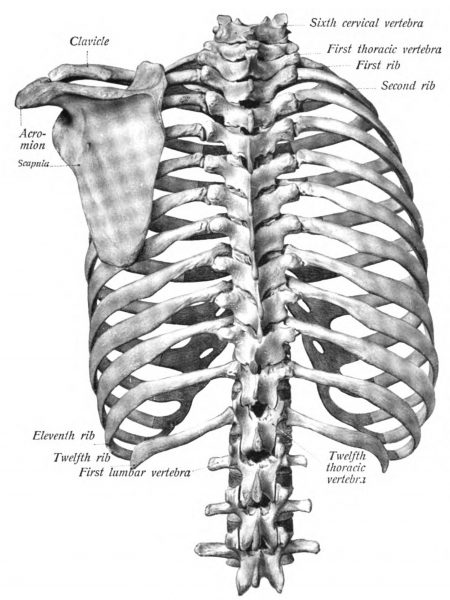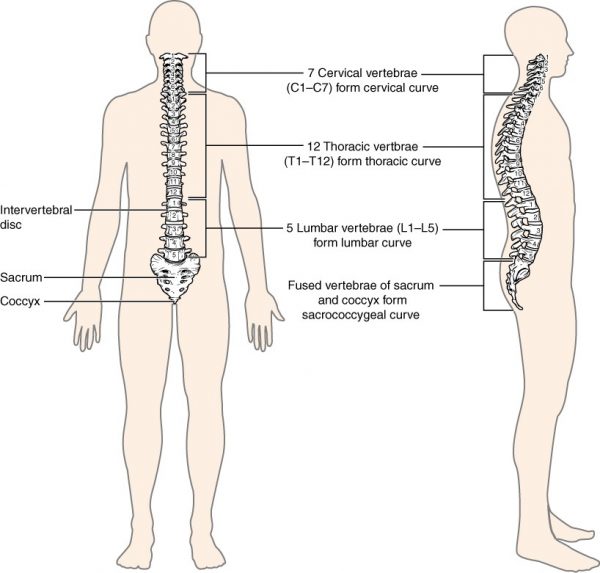The thoracic vertebral column consists of 12 vertebrae interconnected by joints and ligaments.

Functions
- Protection
- Suspension of the body
- Shock absorbance and weight carrying
- Allow mobility
- Provide attachment to the ribs and the muscles
Curvatures
Generally, the two physiological types of curvatures within the entire vertebral column are kyphotic and lordotic.
The thoracic vertebral column curvature is considered to be kyphotic.
- Kyphotic — Bent forward
- Thoracic and sacral curves
- Primary — Develop during gestation
- Lordotic –Bent backward
- Cervical and lumbar curves
- Secondary — Develop shortly after birth

